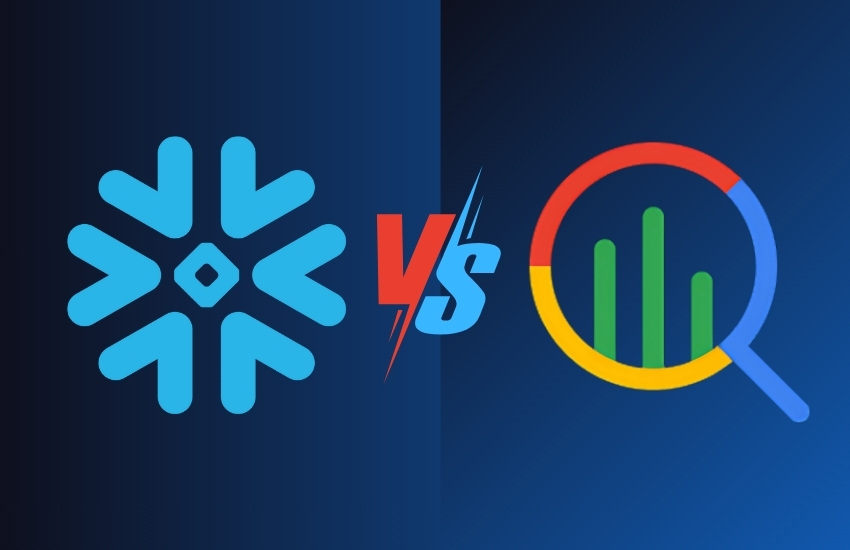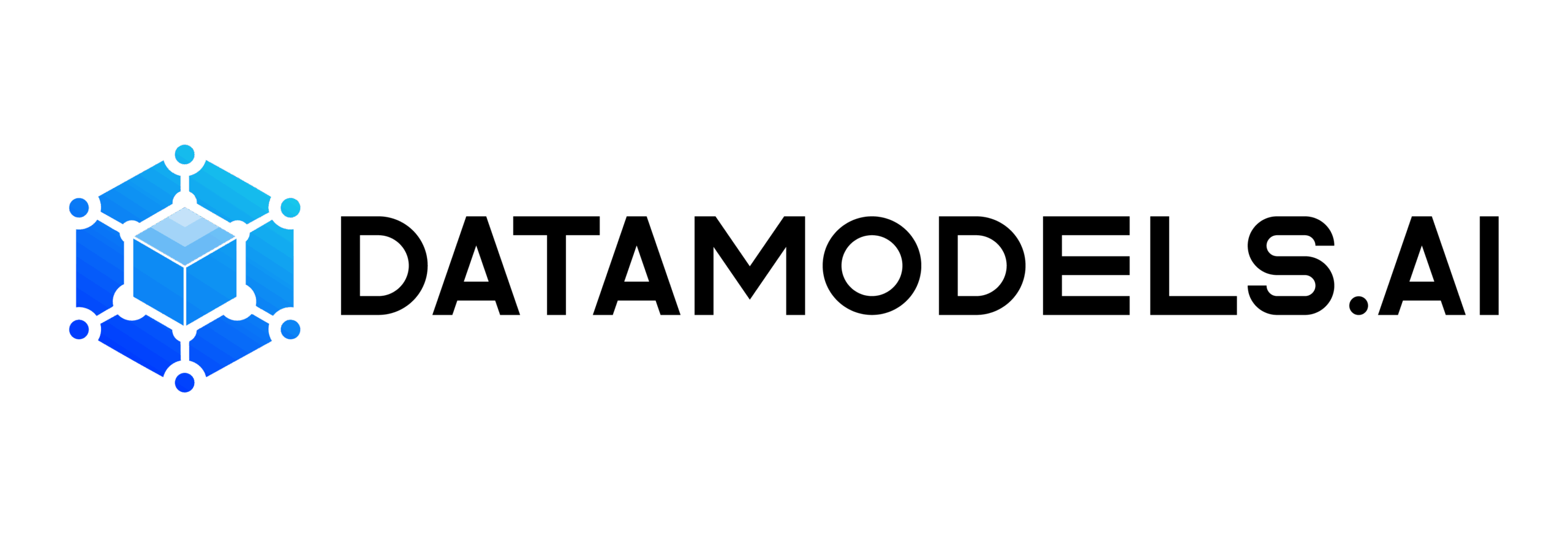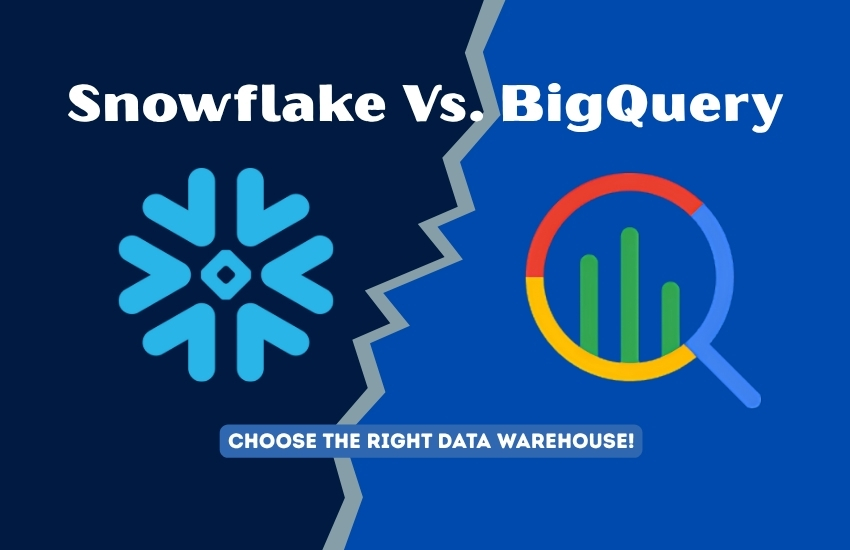You’re not just picking a data warehouse — you’re laying the foundation for how your company scales, experiments, and makes decisions.
And if you’re choosing between Snowflake vs. BigQuery, it’s easy to get lost in sales pages, benchmarks, or loud opinions on Twitter. But a poor fit here? It doesn’t just cost you in dollars but also slows your teams, breaks workflows, and leads to frustrating rework later.
At DataModels.AI, we’ve seen startups burn six figures in unused credits and enterprises get locked into platforms that don’t support their real-world workloads.
Let’s cut through the noise.
In this guide, we’ll compare both platforms across pricing, performance, ecosystem fit, and long-term flexibility so you don’t make a decision that backfires a year from now.
Comparing Snowflake and BigQuery – Quick Overview
Choosing between Snowflake and BigQuery can feel like comparing apples to slightly different, very expensive apples.
Both offer powerful analytics capabilities, but they’re designed with different philosophies, cost models, and integration priorities.
You’ll want to understand not just what they offer but how that translates into day-to-day impact for your team.
Here’s how Snowflake and BigQuery stack up on the features that matter most when scaling a modern data stack.
| Feature | Snowflake | BigQuery |
| Storage & Compute | Decoupled architecture | Serverless, tightly integrated |
| Pricing Model | Per-second compute billing | Per-query pricing with flat-rate option |
| SQL Support | Standard SQL, UDFs, stored procedures | ANSI SQL + extensions, procedural SQL |
| Concurrency | High, isolated via virtual warehouses | Native autoscaling across workloads |
| Ecosystem Fit | Strong support for dbt, Fivetran, modern BI | Seamlessly integrates with GCP ecosystem |
| AI/ML Readiness | External integrations with partners & Python | Native Vertex AI, BigQuery ML |
| Security & Compliance | Granular RBAC, data masking, strong controls | Fine-grained IAM, Google Cloud-level controls |
So… What Does This Comparison Mean For You?
That’s where it gets interesting.
- Do you need strict compute control, or autoscaling without thinking about clusters?
- Are you optimizing for best-in-class open tools or going all-in on the Google Cloud ecosystem?
- Is pricing clarity or flexibility more important to your finance team?
In the next sections, we’ll break down the real tradeoffs, architecture, cost, performance, and ecosystem, to help you make a decision that’s right for your team and your future.
Snowflake Vs. BigQuery – Here’s The Detailed Comparison

Well, a quick comparison table is great, but both Snowflake and BigQuery were built with completely different philosophies.
So, while the surface features may sound similar, the way they operate under the hood and how that affects your team’s workflows, costs, and long-term scaling couldn’t be more different.
Whether you’re migrating from legacy systems, rebuilding your SaaS analytics stack, or choosing a platform for the first time, this section will help you understand the real-world tradeoffs that don’t show up in a demo.
Let’s break it down.
1. Architecture Differences
Snowflake and BigQuery both handle storage and compute in the cloud — but they do it in very different ways.
Snowflake
Snowflake uses a decoupled architecture, meaning compute (virtual warehouses) and storage are separated. You can scale them independently, isolate workloads (e.g., analytics vs. transformations), and fine-tune performance for specific use cases.
This model gives your team more control over compute consumption, but it also means more responsibility. You have to manage warehouse sizes, concurrency, and scheduling.
BigQuery
BigQuery, on the other hand, is fully serverless. You don’t manage infrastructure at all — you just submit SQL, and Google handles the rest. It scales automatically across multiple users and massive datasets.
But while that’s great for simplicity, it can also mean less predictability and less granular control, especially when cost or latency matters.
| Which One Is Better? If your team needs control, workload isolation, or expects complex compute-heavy pipelines, Snowflake may fit better. But if you want simplicity, autoscaling, and deep integration into GCP, BigQuery’s model is hard to beat. |
2. Pricing Models Explained
Pricing can be one of the biggest sources of confusion and unexpected costs when comparing Snowflake vs. BigQuery. Each platform approaches it from a fundamentally different angle.
Snowflake
Snowflake charges for compute by the second, based on virtual warehouse size (XS to 6XL). You’re billed only when the warehouse runs, which gives you control. But that control can backfire if jobs are misconfigured or left running.
Storage is charged separately at a predictable rate. There is also support for automatic suspend and resume, which helps with cost control.
BigQuery
BigQuery, in contrast, uses a per-query pricing model by default. You pay for the number of bytes scanned per query. This is great for occasional querying or low-usage environments, but it can become expensive for frequent, heavy workloads.
They also offer flat-rate pricing for predictable usage, which suits enterprise clients running large-scale workloads continuously.
| Here’s The Key Snowflake rewards teams who optimize compute well, while BigQuery rewards teams who optimize queries well. If your SQL isn’t efficient, BigQuery punishes you. If your jobs run too long or aren’t managed properly, Snowflake will cost you. |
Cost control isn’t just about the platform — it’s about discipline, monitoring, and tooling.
3. Performance & Scalability
This is where benchmarks mislead most teams because the truth is that both platforms are blazingly fast, but only when tuned correctly.
Snowflake
Snowflake shines when you need predictable performance. Because you control the warehouse size, you can allocate more resources to high-priority jobs.
You can also isolate workloads to ensure one team’s heavy transformations don’t slow down someone else’s dashboards.
BigQuery
BigQuery scales automatically — but that doesn’t always mean faster. Query performance depends on partitioning, clustering, and how efficiently your SQL scans data.
It’s brilliant for ad-hoc exploration and batch analytics, but you can hit bottlenecks if your data model isn’t optimized.
A real-world example?
For a SaaS company running daily ELT and high-concurrency dashboards, Snowflake’s isolated compute pools win.
For a marketing analytics team pulling in external data feeds and exploring data on the fly, BigQuery’s autoscaling + UI-based querying is a massive plus.
4. Integration & Ecosystem
No data platform exists in isolation. Your choice between Snowflake and BigQuery should reflect your tooling ecosystem, team workflows, and how your stack will evolve over time.
Snowflake
Snowflake plays well with modern data tools like dbt, Fivetran, Airbyte, Sigma, Hex, and Monte Carlo. It’s become the default in many SaaS data stacks, especially where teams want modular tooling and open architecture.
If you’re using tools outside the Google ecosystem, Snowflake often offers broader, more neutral support.
BigQuery
BigQuery, however, is deeply integrated into the Google Cloud Platform (GCP) ecosystem. If your team uses Google Cloud, Looker, Dataflow, Vertex AI, Pub/Sub, or other Google services, BigQuery will feel native and frictionless.
Querying directly from Google Sheets? One click. Connecting with Looker or building pipelines with Dataform? No extra setup is needed.
So ask yourself:
- Is your team already inside GCP? Or are you building a best-in-breed modular stack?
Your answer should guide your choice.
5. AI & ML Capabilities
Both platforms are investing heavily in AI and machine learning, but they have differences based on their maturity and focus.
BigQuery
BigQuery has a clear advantage in native ML support. With BigQuery ML, you can build and train models directly inside SQL — no need to export data or write Python.
For teams building lightweight predictive models, segmentation, or anomaly detection inside the warehouse, this is a game-changer. It also integrates with Vertex AI, giving you access to AutoML, pre-trained models, and scalable deployment options.
Snowflake
Snowflake, while powerful, takes a more integration-first approach. You can connect to Python environments, use Snowpark, or pipe data into external tools like DataRobot, H2O.ai, or SageMaker.
So, the flexibility is there at an advantage, but where does it fall behind? It’s not as native or unified as BigQuery’s ML flow.
| Who Is The Winner? If ML is core to your analytics roadmap, and you prefer to stay inside SQL, BigQuery gives you an edge. But if you want more flexibility and more control over language and tooling, Snowflake’s ecosystem lets you build your own way. |
6. Security & Compliance
Both platforms offer enterprise-grade security — but how they implement it differs, and that can impact your operational workflows.
Snowflake
Snowflake provides role-based access control (RBAC), fine-grained permissions, data masking, and native support for SOC 2, HIPAA, PCI DSS, and FedRAMP.
In addition, it supports multi-factor authentication, OAuth integration, and private connectivity options (e.g., VPC peering).
BigQuery
BigQuery, being part of Google Cloud, inherits the IAM model from GCP. This means access management is centralized across all services, which is useful if your team already works in GCP but potentially complex if not.
Moreover, it supports column-level security, audit logs, CMEK (Customer Managed Encryption Keys), and is compliant with major standards, including ISO 27001, HIPAA, and GDPR.
| Here’s The Takeaway If you want fine-grained, warehouse-specific control, Snowflake’s model is easier to manage. If you want centralized security policies across your cloud, BigQuery’s IAM model will serve you better. |
Security isn’t just about checkboxes — it’s about who owns enforcement and how easy it is to maintain over time.
Common Mistakes To Avoid When Choosing A Warehouse

You’ve seen the specs. You’ve looked at pricing, performance, integrations, and more. But here’s the truth most vendors won’t tell you:
Even the “right” warehouse can feel wrong if you overlook what matters most, i.e., your actual workloads, your team’s day-to-day reality, and how your stack fits together.
Over the last 15+ years, we’ve seen fast-growing teams waste months and money on rushed warehouse decisions. These aren’t technical failures. They’re strategy failures. And they’re avoidable.
Let’s break down the biggest ones so you don’t make them.
Going With What’s Trending
Snowflake is everywhere. Analyst reports, conference stages, Reddit threads — it’s the golden child of the modern data stack. But here’s the trap: popularity doesn’t mean fit.
Just because a platform works for a Series C SaaS company with five data engineers and a full DevOps team doesn’t mean it’s right for your marketing-heavy GTM org with one analytics engineer wearing ten hats.
The mistake? Choosing a platform because it’s hot, not because it fits your actual use case.
What should you do instead?
Start with your core Jobs-to-be-Done. Do you need high-concurrency BI dashboards? Frequent ELT jobs? Predictable pricing? Auditability? These answers should drive your platform choice — not a Gartner quadrant or LinkedIn hype.
Ignoring Your Existing Tooling and Stack
You’d be shocked how many teams adopt a warehouse without checking how well it integrates with what they already use.
Are you deep in the Google ecosystem using Looker, Google Ads, Vertex AI, and Sheets? Then BigQuery will probably be more seamless.
Are you already invested in dbt, Fivetran, Monte Carlo, or modern ELT/observability stacks? Snowflake might be a better fit with fewer headaches.
But if you ignore this?
Expect fragile pipelines, duplicate metrics, and months wasted on custom scripts just to get basic workflows running again.
Your warehouse isn’t just a database — it’s the spine of your analytics stack. Pick the one that reduces friction with the rest of your tooling.
Read Also: Fix These 10 Data Pipeline Issues
Underestimating The Cost of Migrations
You can switch later, right? Technically yes. Realistically? It’s painful and expensive.
Migrations involve rewriting pipelines, updating permissions, replacing dashboards, validating metrics, retraining teams, and sometimes losing months of productivity. You may also be locked into usage commitments or vendor contracts that make switching even harder.
One client we worked with moved from BigQuery to Snowflake mid-year and spent over 6 months rewriting their ELT logic alone. All because they didn’t test schema support and cost behavior in advance.
If you’re unsure, test early. But don’t assume “we’ll just switch later” is an easy fallback.
Choose the platform you can scale with, not just the one that works today.
Not Running A Realistic Pilot
Demos lie. Benchmarks lie. Even vendor-led “proof of concepts” can be misleading, especially when they cherry-pick workloads that make their product shine.
The only real test is your actual data, your team, and your pipelines.
If you’re evaluating Snowflake vs BigQuery, run a proper pilot:
- Load a subset of real data
- Rebuild a few critical dbt models
- Measure query performance, cost per job, and data freshness
- Test permissions, caching, and failure behavior
Most importantly? Involve the people who’ll use it day to day. If your analytics engineers hate managing Snowflake warehouses, or your marketing team can’t self-serve in BigQuery — that’s a red flag.
Don’t test for “can this work?” Test for “can we thrive here?”
Not sure what to look for? Here’s our complete Data Quality Checklist to help you validate every step of your pipeline before making the move.
Which One Should You Choose? Use Cases By Industry

You’re not building a data warehouse in isolation — you’re building for your industry, your users, and the pace at which your business runs. BigQuery vs. Snowflake isn’t just a technical choice but a strategic one.
Let’s map it to real-world industries to see where each platform truly shines.
SaaS & B2B Tech Startups
SaaS companies often have complex, multi-source data pipelines — from product usage metrics to customer success tools and revenue ops systems. You likely have a modern stack already in place: dbt, Fivetran, Metabase or Hex, Segment, etc.
Snowflake wins here because:
- Decoupled compute gives you isolated transformation vs. analytics layers
- Integrates cleanly with the modular SaaS ecosystem
- Excellent for multi-tenant analytics, with features like secure data sharing
It also plays well with teams that have structured engineering workflows and want more control over spend.
FinTech & Regulated Industries
If you work in a highly regulated industry, such as finance, insurance, or healthcare, security, compliance, and auditability are non-negotiable. You may also deal with sensitive personally identifiable information (PII) and need fine-grained permissioning.
Snowflake usually fits better:
- Granular RBAC, masking policies, and audit logging
- Better support for governance at scale
- VPC/private link options for secure connectivity
You also get predictable compute for batch-heavy processing, such as financial reconciliations and compliance reporting.
E-commerce & Retail
E-commerce companies deal with real-time events, attribution models, and massive ad-spend pipelines. You’re syncing data from Shopify, Meta, and Google Ads and want tight integration with marketing and ops tools.
BigQuery fits perfectly here:
- Serverless compute = no infra bottlenecks
- Direct integrations with Google Ads, GA4, BigQuery ML
- Seamless data sharing with Looker or Sheets
Need to run ML models for product recommendations or customer segmentation? BigQuery lets you do it in SQL without leaving the warehouse.
Marketing Agencies Or AaaS Firms
If you’re running multi-client pipelines, sharing reports with non-technical users, or serving many dashboards across accounts, Snowflake’s architecture can help you scale better.
This is because you can:
- Isolate client data workloads using separate virtual warehouses
- Control compute at a per-client level to manage cost
- Enable secure data sharing with external partners
Agencies also benefit from Snowflake’s predictable performance when running large batch jobs for reports, attribution, or billing.
| Bottom Line! Choose Snowflake if you want fine-grained control, love modular stacks, or need multi-tenant compute. Choose BigQuery if you want to scale without thinking, ML in SQL, or live in the Google Cloud ecosystem. |
Conclusion – Snowflake Vs. BigQuery
Choosing a data warehouse isn’t about checking boxes. It’s about aligning the platform with your business workflows, your team’s strengths, and the pace you need to move.
Snowflake vs BigQuery isn’t a battle — it’s a fork in the road. One path gives you control, modularity, and deep visibility into how your workloads run. The other offers simplicity, seamless scaling, and native ML that’s hard to beat.
The costly mistake? Picking based on surface features, vendor hype, or what’s trending.
What matters is fit.
- Fit with your data team’s skillset
- Fit with your analytics velocity
- Fit with your security model and stack investments
- Fit with the direction your business is heading in
The right platform isn’t just faster or cheaper. It’s invisible. It lets your teams build, explore, and innovate without fighting the tools.
Not Sure Which One Fits Your Team?
We help fast-moving companies choose the right warehouse and set it up for long-term success.
From architecture to cost modeling, pipeline builds, dbt optimization, and stakeholder dashboards, we do it all.
Book your free consultation, and let’s de-risk your decision before it costs you time, trust, or dollars.

